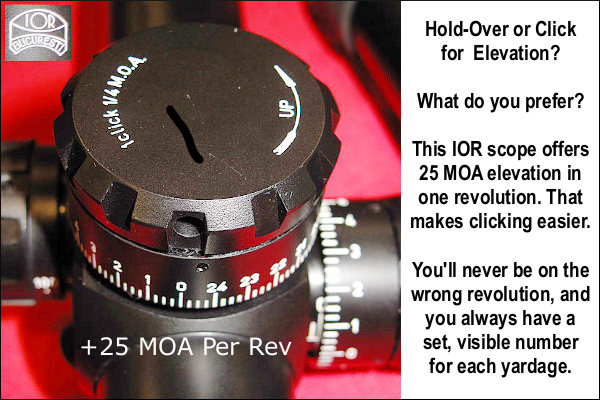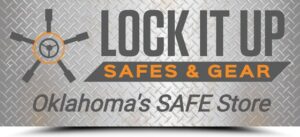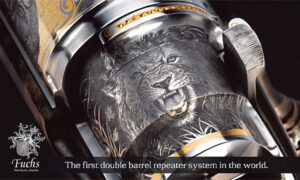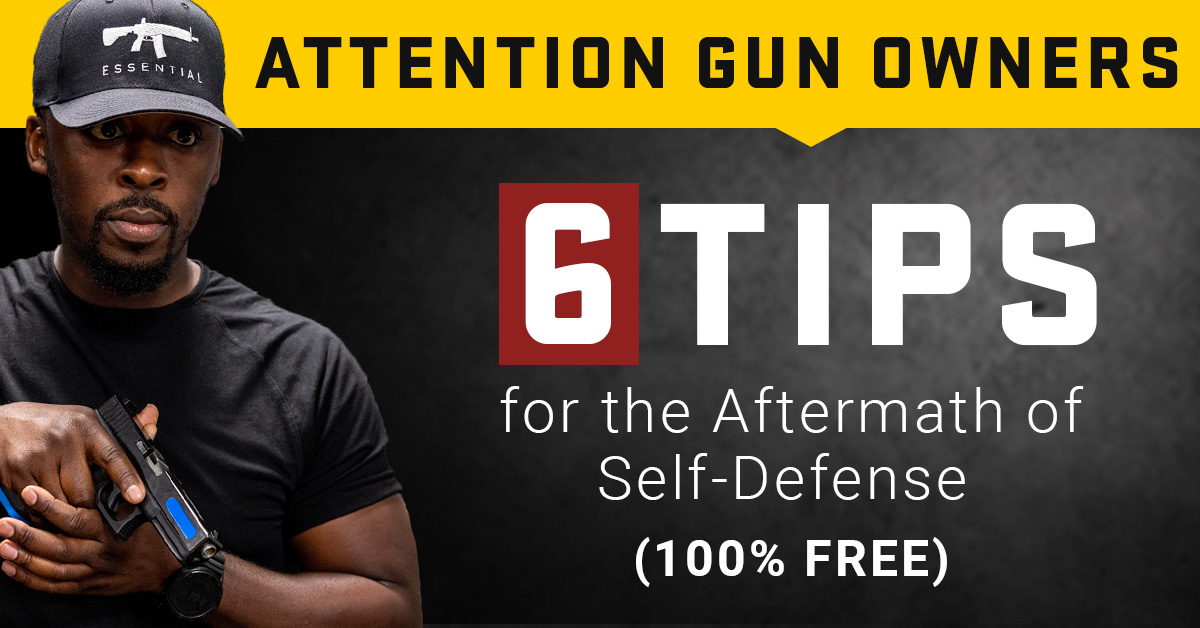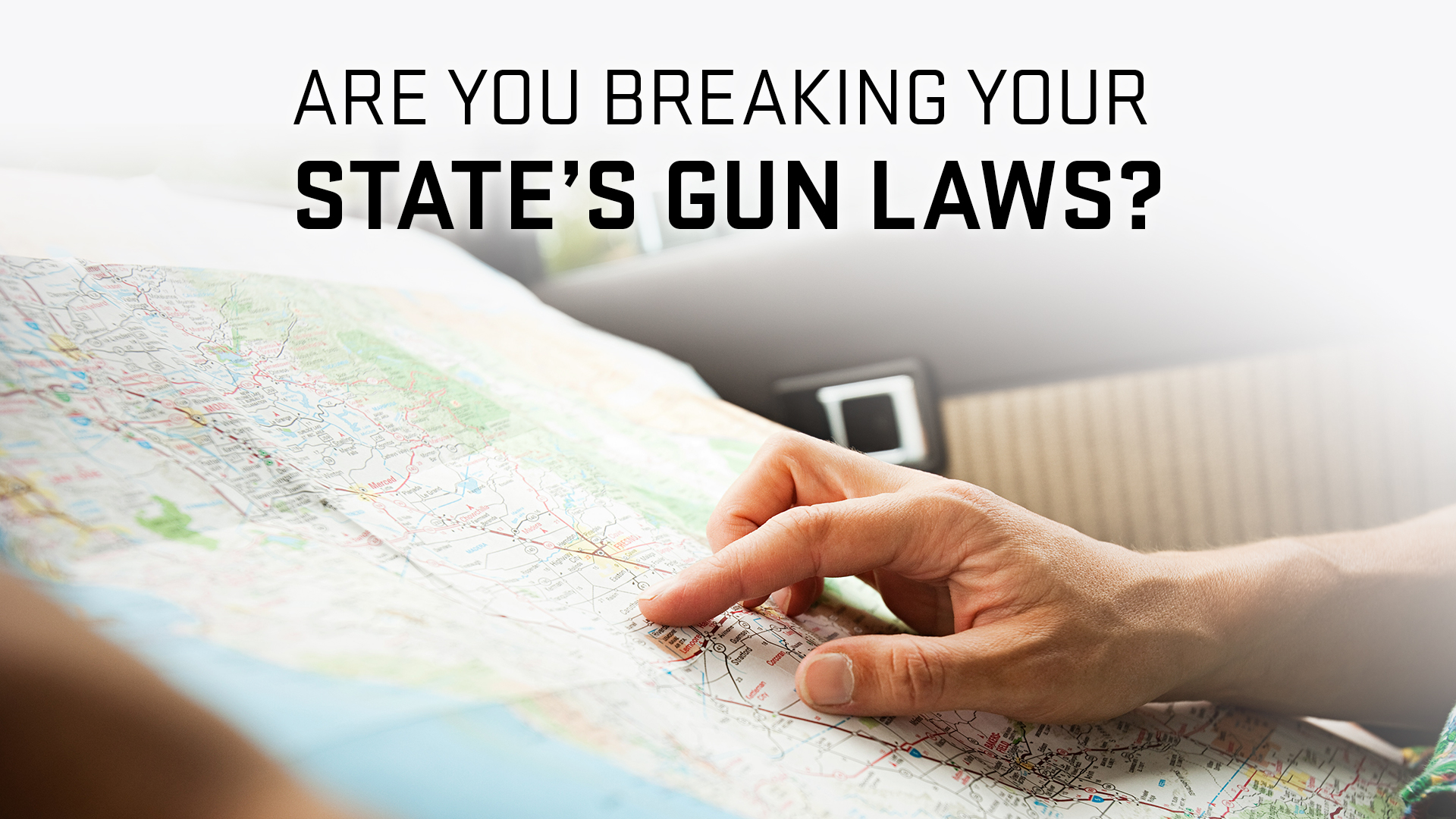The target for a varmint-shooter is not placed at a known, fixed distance like a benchrester. The varminter will have to make numerous corrections as he moves between closer targets and more distant targets, and back again. Click HERE to read a discussion on the Varmint Forum about the best way to adjust elevation. Some shooters prefer to use the scope’s adjustment for elevation. Some varminters hold-over with the help of vertical markers on reticles. Others combine both methods, holding off until a certain yardage and then raising the elevation. Click on Your Scope to See the Majority View”I zero at a distance of 100 yards — by which I mean, really zero — as in, check the ballistics between 200 and 300 yards and adjust the zero accordingly — then set the scope to zero. For each of my Groundhog guns, I have a Click Chart taped to the inside lid of the ammunition box. Then, use the knobs. They’re there for a reason. They’re much more accurate with a good scope, whether or not they have hash marks. All of this assumes that you have a range finder, and that you use it correctly. If you don’t have a range finder and are holding over, you’re just spraying and hoping. You’ll find that 500, 600, or 700 yards is much easier than you think. Move elevation knob up, range-find the critter. The hold-over method is not precise enough. It is not repeatable, because you have to hold over for both elevation and wind. It’s as if every time you change your target by 50 yards you have to start over. My hit ratios increased dramatically as soon as I stopped using the hold-over technique (I used to zero at 200 yards). — K. Candler When I first started p dog shooting, I tried to use the hold-over with a 200 yard zero with my 6mm Rem. Any dog beyond 325-350 yard was relatively safe. I started using a comups table for my three p-dogs rifles (.223 Rems, 6mm Rem and.223 Rems). The.223s can hit 450 yards and the 6mm can reach 650 yards. The comeups table is a great tool (that I hadn’t thought of before) because it removes half the variables when the wind blows. I can focus on the wind and not worry about elevation. “It makes things so much simpler.” — Mike (Linefinder). “I dial for wind and hold for elevation. Use a mil-dot to make windage holdings easier. I use the mil-dot to measure the distance the bullet was “off”. Then, I hold the other way. Once you get used it, it’s very fast.” — PepeLP Minority view — Hold-over is better
“I don’t touch my knobs after I’ve zeroed out at 200 meters.” I use the bottom post instead of turning knobs to zero my varmint riflescopes at 300 meters. I don’t change knobs because I’ve missed varmints by going one full revolution up or down. This has happened to me more than once, and I try not changing my knobs as much as possible. This year I switched to a 300 yard 0 and it works well. I want to try the click-up method, though. It seems more fool-proof.” – 500YardHog’s Compromise View – Use Both Methods
“I also use both [methods] — hold out to 250 and click up beyond that.” — Jack Wolf “I use the knobs on the target and crank in elevation. I also use a distancefinder to know how far they are away before I crank the clicks. I like my Premier Recticle scope with drop dots. No turning [knobs] to 600.”
